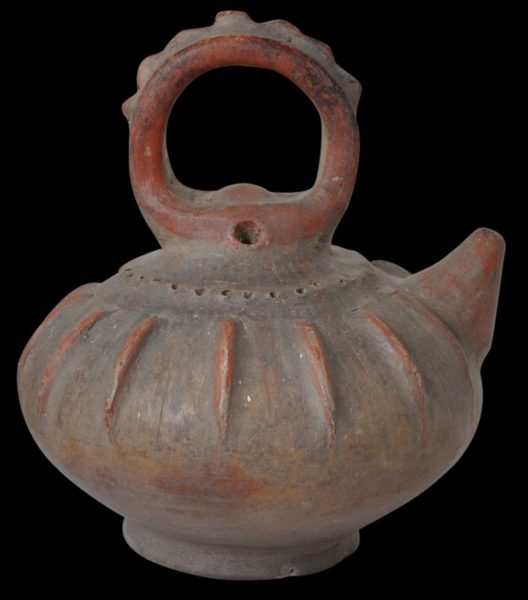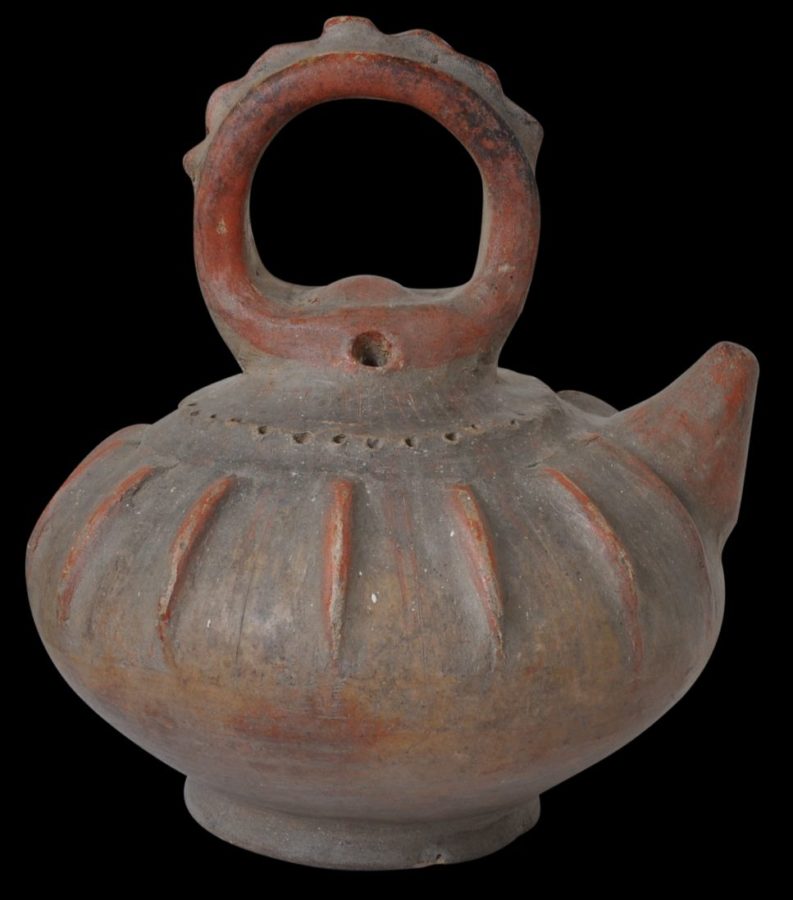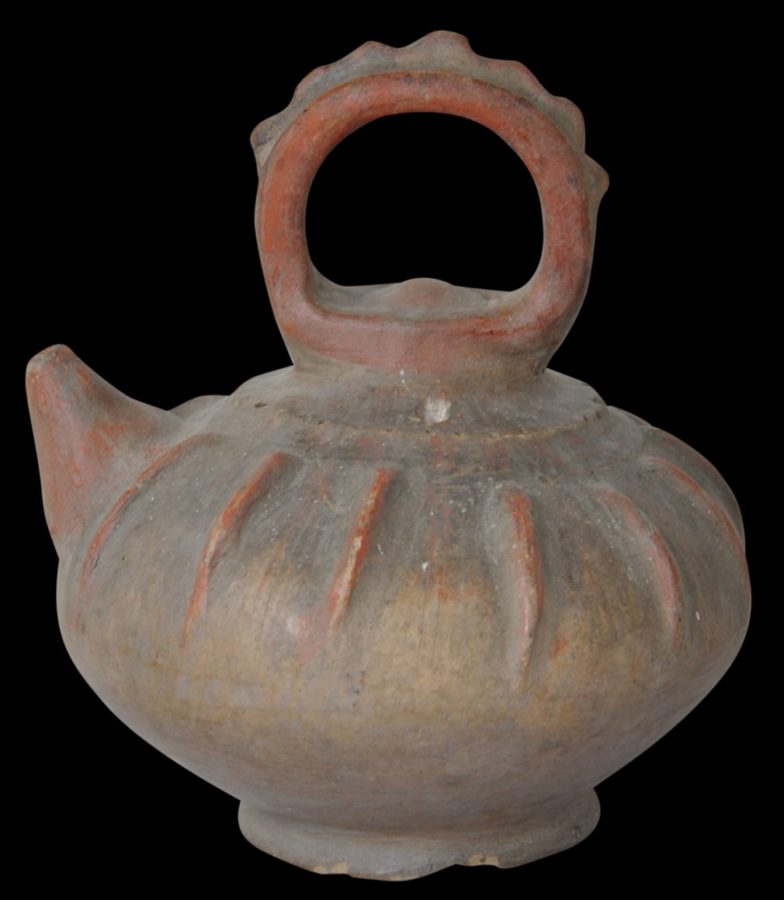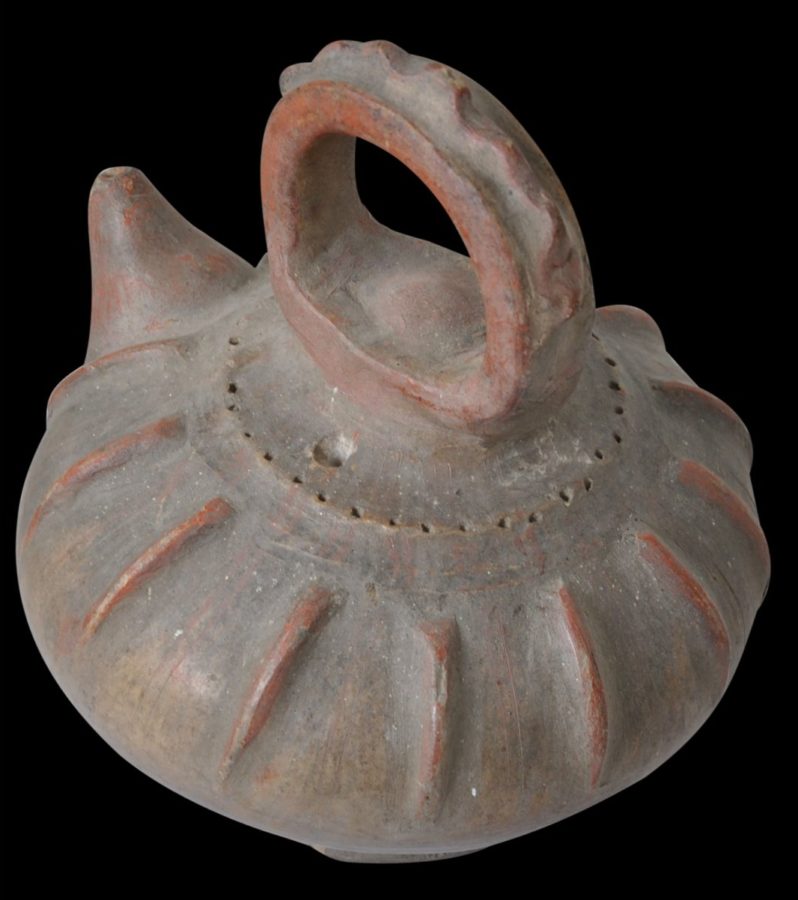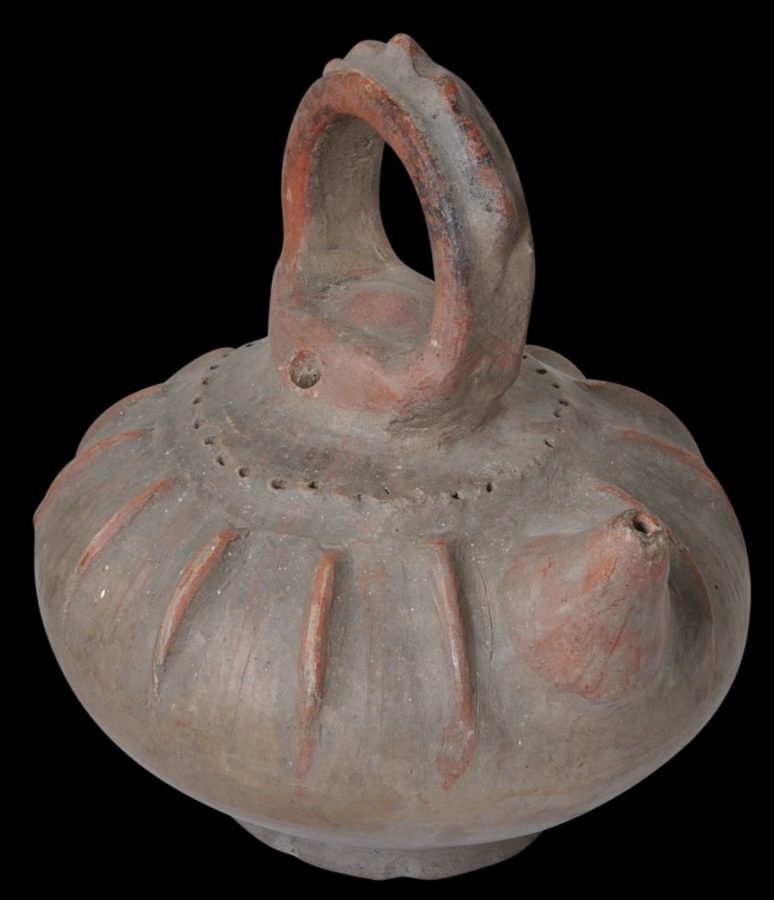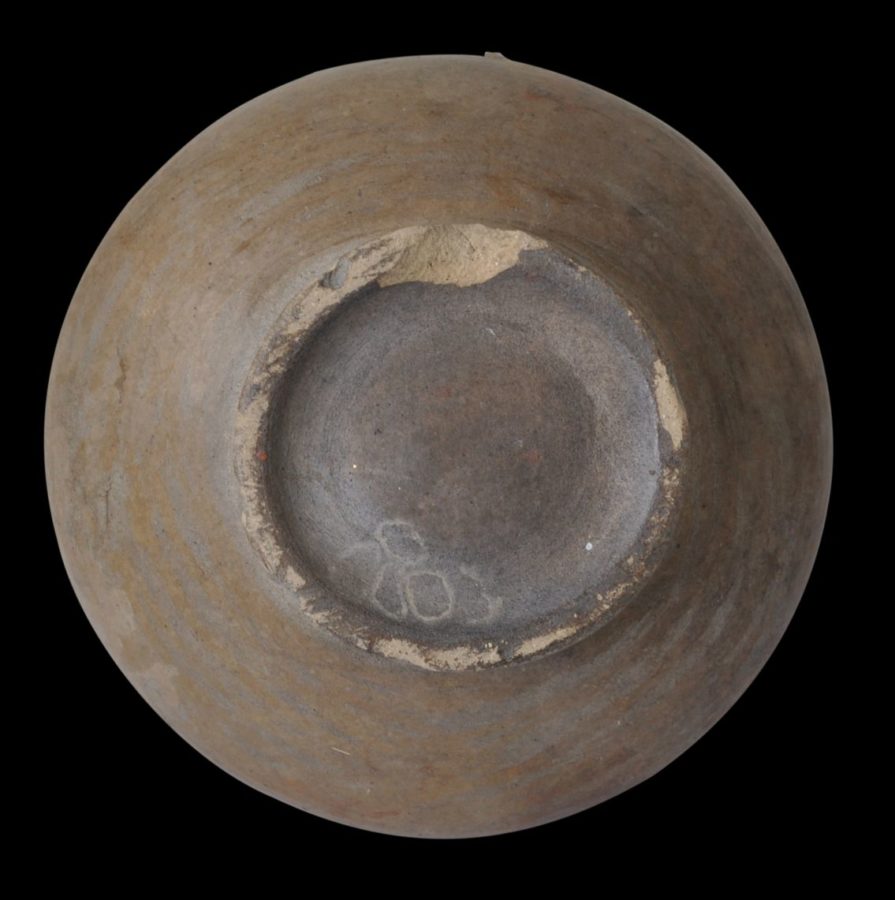Enquiry about object: 6320
Sumatran-Malay Terracotta Spouted Drinking Water Vessel (Kibuk)
Lampung, South Sumatra, Indonesia circa 1900
height: 21.5cm, length: 19cm, weight: 1,031g
Provenance
private collection, southern England.
This teapot-shaped vessel or kibu was produced in Lampung, south Sumatra. It is made of unglazed terracotta most likely by local people and was used locally and exported to elsewhere in Southeast Asia, especially the Malay world, and most particularly to the Malay Peninsula. It was used to hold drinking water – the unglazed nature of the vessel allowed it to be semi-porous so that the water would seep through the sides and evaporate, thereby cooling the contents. (Glazed pottery was seldom produced in Southeast Asia because of the ready availability of such wares that were imported from southern China throughout the centuries.) It is believed that such vessels were used in conjunction with festivals and ceremonies (Lau & Platzdasch, 2010, p. 132).
It stands on a ring foot, and has a flattened, round cushion-shaped body that is ribbed. The form of the ribbed body is in the shape of a gourd or a type of sour fruit known to the Malays as asam gelugur (Garcinia atroviridis), a rain-forest tree fruit native to peninsular Malaysia.
There is a hollow handle and a spout.
The most interesting aspect is that there is no clear aperture into which liquid can be poured to fill the vessel. Instead, there is a small hole in the spout from which water can be emitted and two others on the sides of the vessel through which water can enter, but only if the vessel was held under water and allowed to fill that way. It seems likely therefore, that the vessel was meant to be taken to a stream or river where it was held under water until it filled. The water was then allowed to settle for a while to allow any sediment to drop to the bottom.
Lau & Platzdasch (2010, p. 132) illustrate a very similar example.
This type of pottery is relatively friable – it is fired at low temperatures. Given this and its age, the condition is very good. There are no cracks or repairs; there are chips to the ring foot however. The colour has developed a reddish hue and patina consistent with age.
References
Achjadi, J. (ed.), Seni Kriya: The Crafts of Indonesia, Times Editions, 1988.
Jasper, J.E. & Pirngadie, De Inlandsche Kunstnijverheid in Nederlandsch Indie V: de Bewerking van Niet-Edele Metalen, 1930 (reprinted 2009 by Sidestone Press, Leiden).
Khoo, J.E., Kendi: Pouring Vessels in the University of Malaysia Collection, Oxford University Press, 1991.
Lau, A.T. & B. Platzdasch (eds.), Malay Heritage of Singapore, Suntree Media/Malay Heritage Foundation Singapore, 2010.
Sheppard, M., Taman Indera: Malay Decorative Arts and Pastimes, Oxford University Press, 1972.


